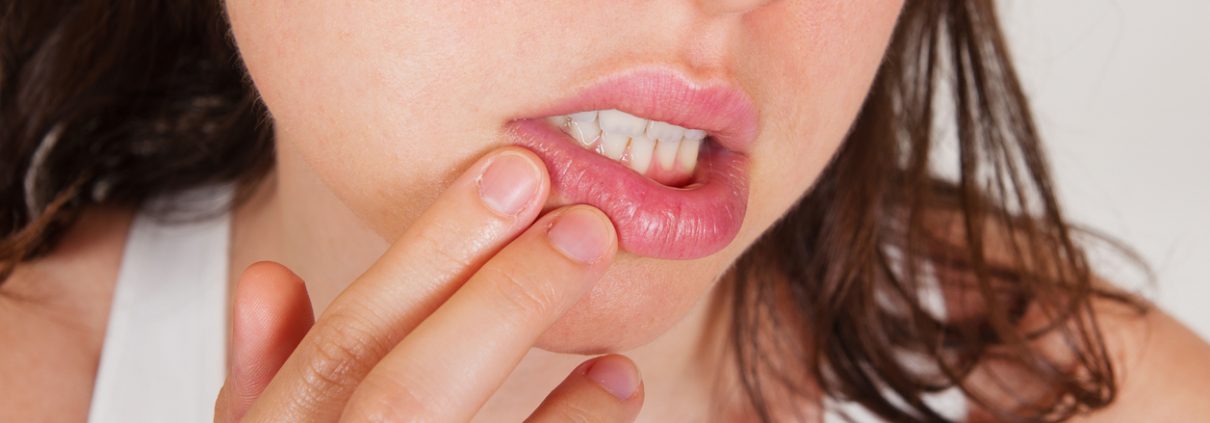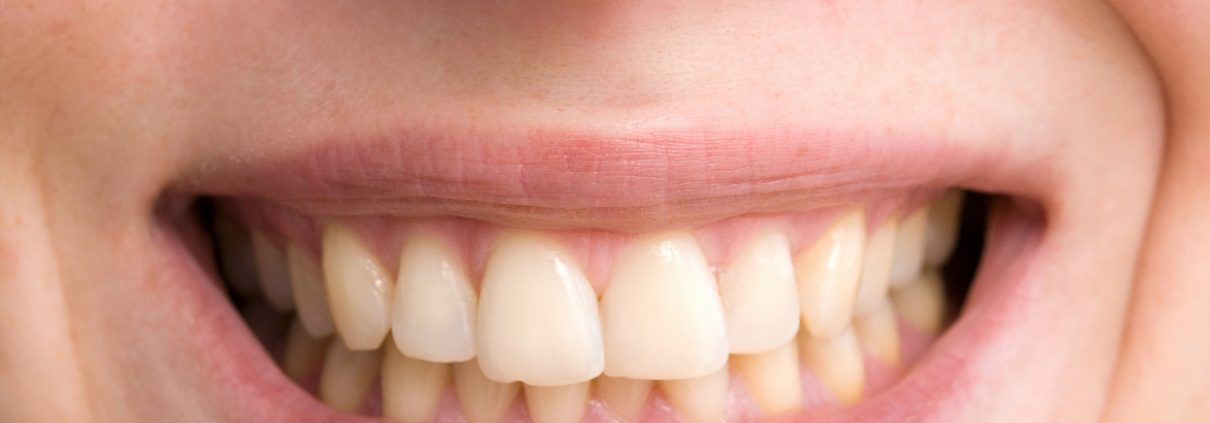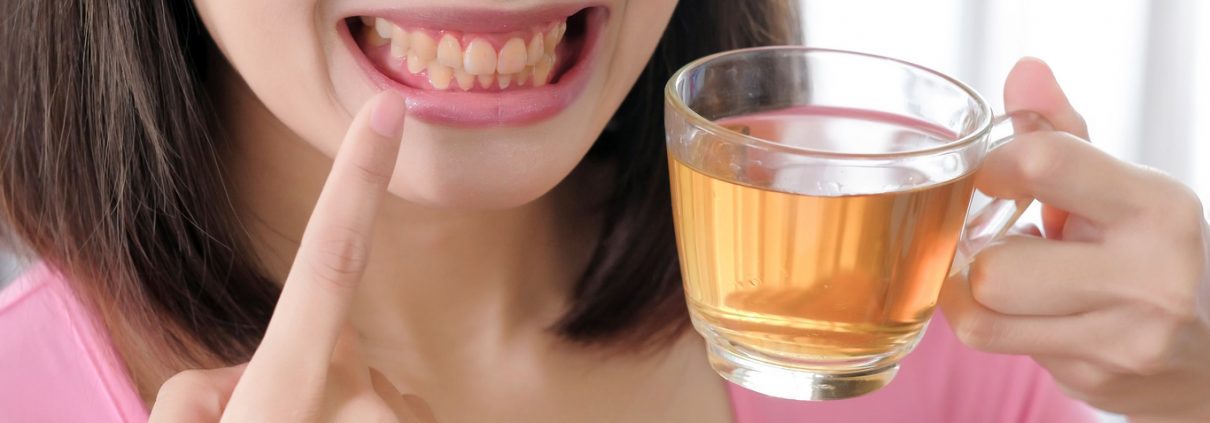Although discoloration of the teeth may be very noticeable when looking at children’s teeth, the following signs may also help determine if your child is suffering from discoloration.
Your baby’s teeth may be brown. This may be due to some dark drinks or some kind of injury.
Your baby’s teeth may have white spots. This may be an early sign of tooth decay.
Your child’s teeth may be red, purple, or blue due to trauma and injury or the consumption of certain dark foods.
Your baby’s teeth may be orange. This may be due to the buildup of bacteria on your baby’s teeth due to poor oral hygiene.
Your baby’s teeth may have black spots, and this may be due to tooth damage.
If your child takes iron supplements, it can sometimes lead to tooth discoloration, so if you brush your child’s teeth and take iron supplements, there will be no stains. You can use an adult toothbrush and brush your children’s teeth, as adult toothbrushes and toothpaste have better cleaning properties.
There are many treatment options for treating tooth discoloration. However, it is best to take preventative measures to change the color of your teeth to prevent any discoloration of your teeth. You should use toothpaste that is low in fluoride. Because too much fluoride can cause tooth discoloration in children.
You need to start brushing and cleaning your baby’s teeth very early; You can start brushing your baby’s teeth with a soft cotton cloth and then gently use your baby’s toothbrush.
Do not give your child high-sugar foods; Foods high in sugar can cause tooth decay and discoloration.
Brushing is a good habit to start with. However, parents may be concerned that their children may eat toothpaste, so it is important that you teach them how to use toothpaste.
Do not encourage your baby to sleep with a bottle of milk at night; The presence of milk and sugar may create a breeding ground for bacteria in your baby’s mouth.
There are many whitening products on the market, however, you should not use such products for your baby because your baby’s teeth are milky and temporary and there is no need to worry because they will soon be replaced by permanent teeth.
On the other hand, if your child has permanent teeth, the color of the teeth will not change; Because when the enamel is damaged, its problem remains constant. In addition, OTC products mainly contain peroxide, which may cause more damage to your baby’s teeth.
As soon as you see any signs of tooth discoloration in your child, it is recommended that you see a dentist; this is because before any other treatment for tooth discoloration, it is important to determine the cause and only your doctor may be able to correct it. It is important to monitor your child’s oral health and seek professional help when you notice jaundice or any other discoloration.
Correcting the shape and size of the teeth or aligning the teeth is a cost-effective, maintenance-friendly approach to correcting the design of the smile and having a smile. Beautification and scaling of teeth is one of the cosmetic dental treatments that causes subtle and minor changes in the teeth. But these small changes make a big difference.
If small imperfections such as fullness or spacing of the teeth or improper shape and size of the teeth have damaged the beauty of your smile, we suggest you correct the shape and size of the teeth to make a beautiful smile without any injection or cutting of the healthy tooth structure.
Bonding: To correct the shape and size of the tooth or to align the tooth is one of the cosmetic dental methods in which a small amount of enamel, i.e. the outer layer covering the tooth, is cut to correct the shape, height, or surface of one or more teeth. Sometimes it is enough to cut a few millimeters of the tooth in the right place to make the tooth more beautiful. Correction of tooth shape and size is often done along with bonding. Bonding is another cosmetic dental procedure in which the shape of the tooth is modified using composites of the same color as the tooth. Shaping and aligning teeth is sometimes the first step in more expensive cosmetic dentistry, such as veneers, teeth whitening, and crown lengthening, which can take months or even years after cosmetic tooth extraction. But if you do not want to spend a lot of time and money on expensive cosmetic dental treatments, correcting the shape of the teeth and aligning the teeth will bring a beautiful smile to your lips.
Problems that can be corrected by the method of measuring teeth
Defects or problems such as partial overlap or abnormal shape of the teeth, partial filling or fracture of the lips, or excessive sharpness of the canines can often be remedied by partial grinding of the teeth to correct and align the teeth.
Advantages
Although cosmetic dentistry is a maintenance method for changing the appearance of teeth, it is better to check the strengths and weaknesses of this method before making a decision to make sure it is appropriate. The benefits of correcting the shape and size of the teeth are as follows:
Lower cost: Shaving your teeth is a cheap way to have a more attractive smile. The cost of this procedure is usually determined by each tooth and the extent of the treatment. If the tooth defect is the result of an injury or accident, the insurance will pay part of the cost.
Painless: Because only superficial enamel is cut, the patient does not feel any discomfort or pain during treatment and does not need anesthesia.
Promoting dental health: Elimination of minor dental overlaps and other defects that can be the site of plaque and plaque accumulation reduces the risk of tooth decay and gum disease.
Orthodontic alternative
Correcting and aligning teeth can sometimes be an alternative to orthodontics, as this simple method can also align teeth and eliminate overlap and irregularity. Correcting and aligning teeth is the best method for people who want to make only minor changes to their teeth or whose teeth need a minor restoration. This procedure is recommended for patients whose teeth are slightly crooked or irregular or too sharp or one side of the tooth is more protruding than the other. Of course, cosmetic tooth extraction is not suitable for decayed, denervated, or unhealthy gums.
Procedure: Correction of tooth shape is done using special dental tools and abrasion techniques. The dentist carefully cuts the enamel with a laser or drill. Before starting the treatment, the teeth are photographed to check the location and amount of pulp and to make sure that the teeth are healthy. The dentist then marks the areas needed for sharpening and beautification with a pencil. The dentist then cuts the deformed areas, shortens the tooth, or manipulates the abnormal tooth to fit the rest of the tooth and correct problems with the bite or misaligned teeth. The dentist eliminates or minimizes the surface defects of the teeth with a special polishing device and sometimes scales the sides of the teeth with sandpaper-like strips. The dentist eventually straightens and polishes the teeth. Correction of tooth shape and size sometimes requires only a 30-minute session, although the duration of treatment depends on its extent.
If the shape of the tooth is corrected along with the bonding, the dentist can correct the filling and the distance between the teeth, make the tooth more beautiful and its color better. Before applying the resin, the dentist applies a dermal device such as acid to the tooth surface so that the resin adheres well to the tooth. Because this causes tooth sensitivity, the dentist may anesthetize the tooth. The dentist sometimes applies a preparation fluid to the tooth to strengthen the bond between the resin and the tooth. The dentist forms the resin and finally dries and hardens it with light. Bonding lasts 30 minutes to an hour, if beautification is more than one tooth, the patient is given several sessions.
Limitations:
Limitations of tooth correction and alignment are as follows:
Partiality of change: Contrasting and aligning teeth unlike some cosmetic dental procedures, it does not cause a significant change in the smile and does not whiten the teeth. So if you want a complete change and a significant modification of the smile design, it is better to try veneer. Cosmetic shaving removes only small imperfections, while veneer covers the entire front surface of the tooth and turns the tooth completely upside down.
Increased risk of tooth decay: Depending on the amount of enamel that is shaved while correcting the shape of the tooth, the tooth may become sensitive after a while. If a lot of enamel is shaved, there is a possibility of tooth breakage.
Post-treatment care: After correcting the shape and bonding of the tooth, it should be well taken care of in order to maintain the obtained result. Bonded teeth are at greater risk of full or broken lips and stains or yellowing than all dental restorations. It is forbidden for patients who have undergone this treatment to bite their nails, bite the pencil head, eat hard food, and open the bottle cap with their teeth. By observing these precautions, the risk of tooth filling can be reduced. Teeth should be brushed twice a day to keep teeth white and free of blemishes. Cigarettes, coffee, and tea are also substances that stain the resin, so patients are advised to reduce their consumption of these beverages and quit smoking.
The third tooth in the mouth is the tallest and most stable tooth and is sometimes called the arch of the tooth.
It is also called the canine tooth, because it is very tall in carnivorous animals, such as dogs whom the tooth is named after, and is used to tear meat and as a means of defense. In humans, the main force in lateral movements of the jaw is applied to this tooth, and due to having a long root and strong bone around it, it withstands these forces and protects other teeth. It also plays an important role in supporting the lips in the maxilla and prevents sagging lips.
Because permanent incisors in the maxilla are usually the last teeth to erupt instead of deciduous teeth, if for any reason, such as the loss of deciduous teeth before the eruption of permanent teeth (due to decay or impact) or the size of the permanent teeth relative to The size of the jaw, there is not enough space for it to grow, it goes out of the dental arch and may even lead to its occlusion. Sometimes, despite having enough space, this tooth grows in the wrong direction, which can cause damage to the root of the front tooth (tooth number 2).
The age of growth of this tooth in the maxilla is about 11 to 12 years old and in the mandible at 9 to 10 years old. Therefore, if the maxillary sting in a 14-year-old person has not yet grown or after growing on one side and after 6 months there is no trace of the opposite sting, you should see a dentist and preferably an orthodontist.
Under almost no circumstances should this tooth be extracted. As much as possible, orthodontic treatment tries to put it in the right place, because no tooth can replace it. If there is not enough space to arrange it, the number 4 tooth on the back is usually extracted. In some cases, despite attempts to remove it by orthodontic treatment due to its very poor position in the jaw or its jaw, it should be pulled and if it is hidden, it should never be left in the jaw because it may cause cysts and in rare cases, a tumor.
Do you have earaches? Our guess is a dental problem in your mouth!
Dental problems may be the cause of earache and ringing in the ears. It is also caused by the opening and closing of the jawbone and teeth to the inside, middle and outer ears.
TMJ disorder is an example of these jaw bone problems that are often considered earaches.
The ear and throat are connected tubes, while the nerve that controls the deep inner muscle of the ear can also control the jaw muscles. This means that the pain in one area may cause problems.
When it comes to diagnosing pain, it is the radiologist’s suggestion to examine the mouth and face and describe the symptoms.
These dental problems are common causes of ear pain:
TMJ disorder: About 10 million Americans suffer from TMJ. This problem occurs when the TMJ joint is not stacked correctly. As a result, the patient often experiences jaw pain, facial pain, crooked teeth, ringing in the jaw, ringing in the ears, and earaches. The dentist examines the jaw and related symptoms and listens to the diagnosis of the cause of the pain. If the TMJ is impaired, a custom occlusal guard should be placed to move the jaw.
Poor bite level: Even unevenness in the jaw causes pain and pressure that puts pressure on the outer ear. A specialist can treat poor bite balance with cosmetic or restorative methods.
Bruxism: Bruxism is another cause of toothaches. Bruxism causes earache and ringing in the ears.
Because the TMJ joint is adjacent to the middle and inner ear, any problem that develops in the jawbone can affect the ear.
The set of cosmetic restoration processes is all done with one goal in mind, and that is the design of a beautiful and principled smile. This is what is called the Hollywood smile. These treatments include the following:
Ceramic laminate (porcelain veneer): In this method, tooth defects are covered with a thin shell of the same color as the tooth. In this method, teeth need to be cut for beauty.
Dental Bridge: Bridges are another type of cosmetic dental veneer. In fact, using two adjacent teeth as a base, a bridge-shaped veneer is created to restore the beautiful appearance of your lost tooth.
Dental implants: Missing teeth have a big impact on a person’s appearance and smile design. Especially when they are in the line of laughter. Dental implants are a sure solution to correct it.
Gingival cosmetic surgery: The beauty of the gums plays a big role in making the teeth look beautiful. Sometimes it is necessary to correct the height of the gums to create a proper smile design. This operation is called cosmetic gum surgery.
Tooth bleaching (teeth whitening): Tooth discoloration caused by food coloring, smoking, etc. is very effective in the beauty of laughter. Teeth bleaching at home and in the office is the solution to eliminate these discolorations and restore a beautiful appearance to a person’s smile. Bleaching in the office quickly whitens teeth, and bleaching at home ensures that this whiteness lasts.
Alignment of teeth without orthodontics (the beauty of teeth without orthodontics): One of our most common uses for dental bonding is laminate composite or veneer composite. This method has been used in many cases today for people who want to have straight and straight teeth without orthodontic treatments. In many cases, straightening teeth is possible with the help of a tooth bonding technique.
For keeping healthy, beautiful teeth, follow these recommendations.
Keeping teeth healthy is more important than their appearance. Some materials scratch the surface of the teeth. Those who use less of these substances have healthier teeth. These substances sometimes cause allergies in the gums.
Do not brush your teeth too much.
If you want to find the best toothpaste and toothbrush, seek the approval of the American Dental Association (ADA). This way you will never use a rough toothbrush. A toothbrush, while it should be able to remove food deposits on the teeth, should not damage the gums. A soft toothbrush is the most suitable type of toothbrush.
Never use a toothbrush for more than 3 months. This time limit is mandatory. If you want to use an electric toothbrush, make sure that the head is rotating and does not move vertically.
For teeth whitening, there are a few options you can take such as dental bleaches. There are different types of bleaches. Ordinary bleach sold over-the-counter in pharmacies does not have a detrimental effect on teeth and gums. But there are packages that are available as bleach for dentists. These packs contain acidic compounds that may damage the enamel in the long run. Ask your dentist for the best type.
The most effective and fastest method of teeth whitening is possible using concentrated solutions. These compounds affect the structure of tooth enamel and reduce its strength. On the other hand, after a short time, its color returned to its original state and in the end, it resulted in nothing but a waste of time and money. In other words, teeth whitening is not due to discoloration, but the removal of the surface layers of tooth enamel.
Root canal
Previously, a tooth whose root had become infected had to be extracted. However, in 95% of cases today, this is no longer the case. Root canal therapy treats the root (also called the pulp) of the tooth. Today, in new dental technology, wisdom tooth denervation has become a relatively painless technique that allows you to preserve your teeth instead of losing them. Widespread tooth decay, trauma, tooth fracture, and gum disease can cause tooth loss and can cause symptoms, such as pain when chewing and pressing on the tooth, tooth sensitivity to cold and heat that lasts longer than usual. Whatever the cause of the nerve canal problem, your teeth can be saved by using root canal therapy.
What is root canal therapy?
In Greek, “endo” means inside and “dent” means tooth, so endodontic treatment means healing the space inside the tooth. Knowing the anatomy of the tooth will help to understand the root canal treatment. Inside the tooth, beneath the white enamel and hard layer called dentin, is the soft tissue of the tooth root. The root of the tooth contains blood vessels, nerves, and connective tissues, and as the tooth grows, it forms the hard tissue that surrounds the tooth. Root tissue extends from the crown of the tooth to the tip of the tooth root, where it attaches to the surrounding tissue of the tooth root. Root tissue plays an important role in tooth growth. However, after full growth, the tooth can remain without roots, because the tooth can feed on the surrounding tissue.
How does root canal therapy protect teeth?
Root canal therapy removes inflamed and infected tissue from the root and thoroughly cleans and shapes the root canal, then fills and closes the empty space in the root canal. You can then see your dentist again for a veneer or other restorative treatment to fully restore tooth function. After restoration, the denervated tooth acts like any of your other teeth.
Why may a tooth need root canal therapy?
Root canal therapy becomes necessary when the root (soft tissue inside the root canal) becomes inflamed or infected. Inflammation and infection of root tissue can occur for a variety of reasons:
Tooth Decay
Perform repeated treatments on the teeth
There are cracks or fractures in the teeth
Any blow to the tooth, even if it does not cause a fracture or apparent crack on the tooth, can lead to damage to the root tissue of the tooth. If inflammation or infection of the root tissue is not treated, it can lead to toothache and eventually tooth abscess.
Signs that the tooth needs root canal therapy:
Symptoms to look out for are:
Pain
Prolonged sensitivity to heat and cold
Sensitivity to touch and chewing
Jaundice and tooth staining
Swelling
Sensitivity and fluid leakage from abscess sacs and adjacent bone and gum tissue
How to perform root canal surgery
Root canal therapy is often performed in one or two visits to the dentist and includes the following steps:
The root canal specialist injects local anesthesia after examining the tooth and examining the photo taken of the tooth. After the tooth is anesthetized, he places a small protective layer of rubber to keep the tooth dry in that area to separate the tooth from adjacent teeth and prevent saliva from entering it.
The orthodontist then pierces the crown and uses very fine tools to remove the root tissue from the root canal and root canals and to shave the root canal and fill it with dental fillings.
After the root canal is cleaned and shaved, the root canal specialist fills the space inside the root with environmentally friendly fillers (usually a rubber-shaped material called rubber). In order to completely seal the root space, this filler is placed inside the root space with adhesives. In some cases, a temporary filler is placed on the root canal to close the entrance. Before the tooth is restored, this temporary filling material is removed by the dentist.
After the final referral to a root canal specialist, you should see a dentist to place a veneer or other restorative material on the tooth and protect and restore it to its full function.
If the tooth does not have the proper structure to hold the restorative material inside, the dentist or endodontist may place an abutment inside the tooth. You can get more details about different methods of repairing your teeth by asking your dentist.
Will you feel any pain during the denervation treatment?
Many root canal procedures are performed to relieve toothache caused by inflammation or infection of the root. With new techniques and local anesthesia applied, most patients do not feel any pain during endodontic treatment.
Your teeth may be sensitive for the first few days after treatment, especially if you had a toothache before the neurosurgery treatment. This allergy can be treated with over-the-counter medications or prescribed by your dentist. Follow the instructions of your root canal specialist completely. For some time after the denervation, your tooth will look slightly different from other teeth. However, if you feel severe pain or pressure that lasts for more than a few days, be sure to contact your endodontist.
When the tooth begins to open the gums to find a way to fully grow, it is normal to experience some discomfort as well as swelling in the gums.
When wisdom teeth come out through damage to the gums, they can cause complications that lead to more swelling, including:
A welt that traps food and bacteria, in which case the area becomes inflamed.
Swollen gums can also be caused by a vitamin deficiency or gingivitis, but do not normally cause swelling or damage to your teeth.
How can we reduce the swelling of the gums in wisdom teeth?
Wisdom teeth are one of the causes of pain in the jaw area.
If your teeth are swollen, food is trapped or food is sticking to your teeth, rinse your mouth thoroughly. The dentist recommends the use of salt water or the use of antibacterial mouthwashes in these cases. Swelling is reduced when these foods are cleared from your mouth and teeth.
You can not prevent the full growth of your wisdom teeth.
Also, avoid problems such as occlusion, which can lead to improper tooth extraction.
The best way to prevent these problems is to see your dentist every six months.
Your doctor can prescribe strategies to prevent these problems by examining your tooth growth. It is not uncommon for the jaw to feel pain when a wisdom tooth comes in. Swelling of the gums in the wisdom teeth can be due to reasons such as food and bacteria being trapped in the gums. When you feel pain or swelling in your gums, you can use ice packs or antibacterial drugs and painkillers to relieve the pain as well as prevent the growth of more bacteria.
Cause of swelling of the gums around the teeth:
Possible causes of swollen gums around a tooth include:
Poor dental hygiene
Occasionally, food debris can be trapped between the teeth and the gum line. Flossing and brushing can help remove these substances. If you do not remove these substances, the bacteria present in the mouth will grow in this area and cause abscesses or swelling around the teeth.
Periodontal diseases
Infection and inflammation of the gums may cause periodontal disease.
About 46% of people 30 years of age or older in the United States have symptoms of gum disease. The medical term for this disease is periodontal. Periodontal disease occurs due to infection and inflammation of the gums around the teeth. This infection occurs when plaque builds up between a person’s teeth.
Medical research shows that the primary color of a healthy tooth is not as white as we think, and most white teeth are not synonymous with being healthier.
The strongest teeth are the healthiest and most natural, but most of these teeth are not white. Of course, we cannot say that these teeth are not completely white, but it means that their color is not white paper, but a little darker. But what is the reason for this?
The enamel itself is bluish white, but it is also somewhat clear, so the yellow dentin underneath makes the tooth appear light yellow or gray.
Of course, this type of tooth whitening is completely different from tooth staining due to the use of external items, and undoubtedly, teeth that have been stained due to side effects are less healthy than normal teeth. All dentists and specialists definitely confirm that teeth that have changed color due to not using toothpaste such as toothbrush, floss and mouthwash, are at a much lower level of health than ordinary teeth.
The two main causes of tooth discoloration due to external elements can be mentioned as excessive tobacco consumption or rare metabolic disorders. This disorder can be partially corrected with a combination of bleaches and polishing the tooth’s laminar layer, but each of these solutions will weaken the teeth if used consistently.
Solutions to prevent tooth discoloration:
Prevention is always better than cure, which is why we offer you simple ways to protect your teeth from discoloration.
Avoid excessive consumption of sweets, as sweets often cause cavities and discoloration of the teeth.
If you smoke or smoke, try to use special fluorides.
Hydrogen peroxide is one of the best toothpastes and you can put this substance on your toothbrush and increase the whitening effect of teeth. Sodium perborate is also present in this substance but it is very different, although the consumption of sodium Perborate should only be taken under a doctor’s supervision.
If you do not use the toothbrush properly, the teeth will change color and in such a case, you must have two toothbrushes and you can use one of them in a dry state to clean the mouth and the other with toothpaste.
It is very important to observe proper oral hygiene in this regard, and this solution is usually not recommended for aesthetics, and in fact, lack of proper oral hygiene can have a negative impact on overall dental health.
Teeth change color over time due to various factors and spots appear on their surface. But discoloration and stains on the surface of the tooth are different, and this makes their treatment methods also different.
In general, in terms of depth of discoloration, three types of tooth stains are superficial stains, deep stains and aging stains.
Surface stains: These stains are created in the outer layer of the tooth, which is called enamel. Stains and discoloration from foods such as coffee and tea, soft drinks and other substances are of this type. Cigarettes can also cause surface stains.
Deep spots: These spots are created in the internal structure of the tooth (dentin layer). Ivory has a darker color. In the following cases, deep spots appear in the dentin layer:
They are exposed to a lot of fluoride during childhood when their teeth are growing
Your mother took the antibiotic tetracycline during pregnancy, especially in the second half of pregnancy
In childhood, a growing permanent tooth is damaged by injuries such as a fall or accident
Permanent tooth is injured and has internal bleeding that has changed its color (red, brown or black tooth)
You may be born with a rare medical condition called dentin genesis imperfecta, which causes teeth to turn gray or purple.
Aging spots: This color change includes any type of surface and depth. The dentin layer turns yellow with age. On the other hand, the enamel that covers the surface of the tooth becomes thinner over time and shows more dentin color. On the other hand, eating high-pigmented foods and smoking also make teeth yellower. Eventually, injuries such as lip filling and cracking can cause tooth discoloration.
As mentioned, the factors that cause discoloration and stains on teeth are not always limited to colored drinks and foods. Some people experience tooth discoloration as a result of taking drugs, fluoride, cigarettes and other tobacco products, aging or injuries. The method of teeth whitening varies depending on the severity of the tooth discoloration and its type. That’s why it’s important to identify the cause of the discoloration.
If one of your teeth is darker than the other, it is often due to dental injuries or certain medications. If the cause of a particular tooth is dull, injury and trauma can occur in two cases. Iron in the blood may have entered the dentin structure of the tooth and saturated it, resulting in deep spots inside the tooth. Another condition is that the injury has caused the tooth structure to become out of shape, resulting in more spots accumulating in some areas of the tooth.
Sometimes when you look closely at your teeth in the mirror you will notice white spots on the surface of the tooth and sometimes you may see only a white spot on the surface of the tooth. White spots on the surface of the teeth are usually the first signs of tooth decay and possibly perforation in the future. Do not worry because it is not too late for treatment. You should have regular check-ups every six months and scaling in a timely manner to prevent tooth decay. White spots on the surface of the tooth indicate that the process of decalcification (meaning the removal of calcium from the tooth structure) is taking place. Calcium depletion usually occurs due to poor diet and lack of saliva flow in the mouth and is irreversible. However, this condition can be managed by drinking plenty of water and many times, as well as using fluoride-containing products to mineralize teeth.
Discoloration after teeth whitening
In fact, this problem does not mean discoloration of the teeth. When you go to the dentist to whiten your teeth, you should know that dental restorations such as veneers or laminates, or veneers, fillings and implants do not whiten with this treatment and do not change color. The surface of dental restorations is completely smooth, like glass, and unlike teeth, there is no porosity. Due to the smooth and polished surface of the restoration and the absence of porosity, the pigment materials cannot enter its structure and change its color. When you want to whiten your teeth, dental restorations do not have pigment and stains that become whiter when you lose them. Therefore, after bleaching, your natural teeth turn white, but the restorations do not change color, which is why there is a color difference between natural teeth and dental restorations. As a result, you think the restorations have changed color. That is why it is always recommended that if you want to whiten your teeth, do this before tooth restoration so that the restoration color is chosen according to your whitened teeth.










